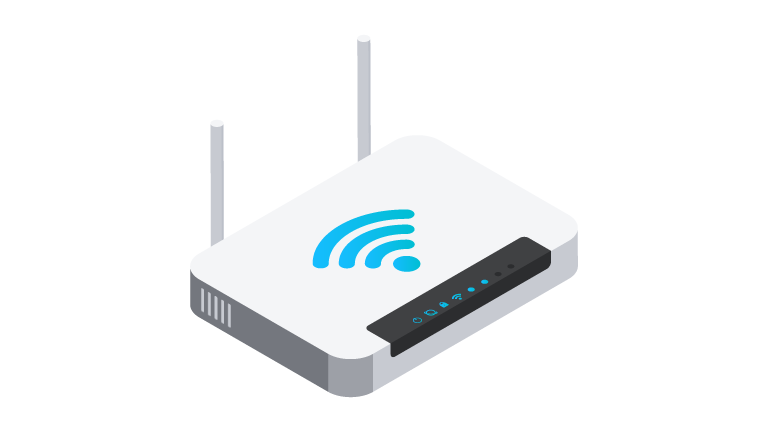WiFi 5 vs. WiFi 6 vs. WiFi 6E: What’s the Difference?
WiFi 5, WiFi 6, and WiFi 6e differ mainly in speed, efficiency, and device-handling capacity, with WiFi 6e adding access to 6 GHz for faster connections.
Ever felt like your home WiFi drops the ball the moment more than two people start using the Internet? That’s the exact kind of problem we used to face with older generations of WiFi, but fortunately, WiFi 6 was made to fix that.
Today, we’ll be taking a look at some of the technology making this happen, and why WiFi 6 remains the market standard even though WiFi 6E and WiFi 7 have been released.
📍 Quick Navigation
In a hurry? Hop right over to the section you need!
- 6️⃣ What Is WiFi 6? (Up next!)
- 🌟 WiFi 5 vs. WiFi 6: Why is WiFi 6 Better?
- 🤔 WiFi 6 vs. WiFi 6E: What's the Difference?
- 🆚 Comparing WiFi 5, WiFi 6 & WiFi 6E
- 🛜 Should You Upgrade to WiFi 6?
- ❓ Frequently Asked Questions (FAQ)
What is WiFi 6?
Officially known as 802.11ax, WiFi 6 is a wireless standard ratified by the Institute of Electrical and Electronics Engineering (IEEE) in 2019.
If you’re moving up from WiFi 5, it’ll be like going from a one-lane road to a multi-lane highway—meaning more people can now “drive” at the same time with fewer slowdowns or digital traffic jams.
Unlike its predecessors that focused primarily on speed, WiFi 6 also prioritised improvements to efficiency, allowing it to comfortably handle multiple simultaneously connected devices. After all, when there are lots of cars on the highway (i.e., your home network), there’s normally going to be a great deal of congestion too.
Indeed - previous generations of WiFi experienced similar troubles with network congestion as well, but none of them were equipped with the tech needed to fix it. Fortunately, such solutions were what WiFi 6 brought to the table, allowing users to greatly improve their online experiences at home. So, let’s find out exactly what those are.
🌟 WiFi 5 vs. WiFi 6: Why is WiFi 6 Better?
1️⃣ WiFi 6 is more efficient than WiFi 5
✨ OFDMA (Orthogonal Frequency Division Multiple Access) is a technology that allows connected devices to receive transmitted information simultaneously as opposed to queuing up one-by-one.
Older WiFi standards were programmed to transmit data sequentially, which led to significant network slowdowns (effectively digital traffic jams) when multiple devices were connected. But with WiFi 6 came OFDMA (Orthogonal Frequency Division Multiple Access)– this allowed wireless channels to be divided into smaller segments, or “resource units”, ensuring multiple devices could receive data simultaneously instead of having to wait in line.
2️⃣ WiFi 6 is better for uploading files and video conferencing
✨ With WiFi 6, MU-MIMO (Multi-User Multiple Input, Multiple Output) is now able to support a maximum of 8 simultaneous connections (up from just 4!) and in both directions (uplink and downlink).
Originally introduced with WiFi 5, MU-MIMO (Multi-User, Multiple Input, Multiple Output) received a major glow-up when WiFi 6 entered the picture. It was a feature that allowed routers to communicate with multiple connected devices at the same time, though this only worked for downlink communications at first, such as image downloads.
But now, MU-MIMO can not only support more simultaneous connections (from 4 to 8 max!) - it can do so in both directions (uplink and downlink) too. The end result for users like us? Better and smoother online experiences, especially when carrying out tasks like video conferencing.
3️⃣ WiFi 6 reduces power consumption of connected devices
✨ Target Wake Time (TWT) lets gadgets “nap” when they’re not needed, extending battery life and reducing power consumption for connected phones, laptops, and smart home gadgets.
Like an alarm clock, Target Wake Time (TWT) allows connected devices to schedule when they “wake up” to send and receive data instead of having to constantly refresh their connection to the network.
This leads to significantly improved battery life because less power is spent on maintaining it, and it is particularly beneficial for battery-based devices like smartphones and tablets.
4️⃣ WiFi 6 opens up higher network speeds and performance
✨ 1024-Quadrature Amplitude Modulation (QAM) increases data transmission efficiency, allowing for faster network speeds and improved performance.
Last but not least, WiFi 6 also utilises 1024-Quadrature Amplitude Modulation (1024-QAM), which enhances data transmission efficiency by allowing more to be packed into each transmission, leading to faster speeds and greater network reliability.
In fact, one of the biggest selling points of WiFi 6 (at the time of release) was its maximum potential throughput of 9.6 Gbps, almost triple that of WiFi 5’s 3.5 Gbps. Essentially, it's like having a bigger bag to carry your stuff around when you go out, making WiFi 6 great for bandwidth-heavy applications like streaming and gaming.
🤔 WiFi 6 vs. WiFi 6E: What's the Difference?
But what about WiFi 6E?
Well, if we were to think of WiFi 6 as a packed theme park, upgrading to WiFi 6E would be like getting VIP, fast-pass access to an exclusive, crowd-free area within.
After all, WiFi 6E is simply a modification of WiFi 6, albeit one that unlocks a brand-new, ultra-fast 6 GHz frequency band for use. Granted, this singular change might not seem like much, but it makes WiFi 6E comparatively better than WiFi 6 for VR, cloud gaming, and video calls as long as your devices are compatible.
As for WiFi 7, it’s a pretty different ball game. This wireless standard comes with its own separate arsenal of connectivity features, which we discuss in more detail here:
👉 What is WiFi 7? All You Need to Know
🆚 Comparing WiFi 5, WiFi 6 & WiFi 6E
Anyway, we know there's a lot of information to sort through, so here’s a quick table to sum up the key comparisons you’ll need to know for this article.
Feature |
WiFi 5 (802.11ac) |
WiFi 6 |
WiFi 6E |
Max Speed |
3.5 Gbps |
9.6 Gbps |
9.6 Gbps+ |
Device Handling |
Moderate |
Excellent |
Excellent |
Congestion Reduction |
No |
Yes |
Yes (Best) |
Power Efficiency |
No |
Yes |
Yes |
Security |
WPA2 |
WPA3 |
WPA3 |
Best For |
Casual streaming & browsing |
Smart homes, gaming, WFH setups |
VR, cloud gaming, ultra-HD streaming |
🌟 Should You Upgrade to WiFi 6?
In short, yes.
Even with the introduction of WiFi 6E and, more recently, WiFi 7, WiFi 6 remains a solid benchmark for today’s wireless needs, which reasonably makes it the bare minimum for your home setup. Whether you’re working, gaming, or buffing up your smart home ecosystem, upgrading to WiFi 6 from WiFi 5 will ensure better performance and future-proof connectivity.
The best part? Getting set up with WiFi 6 is easier than ever. When you sign up with StarHub, you’ll get the most up-to-date hardware and expert installation from our Hub Troopers, ensuring everything runs smoothly from day one. No hassle, no lag—just seamless, high-speed connectivity, and Broadband Peace of Mind.
For more information, hop straight to our Broadband page, or check out our other articles below:
👉 What is WiFi? Frequency Bands, Wireless Standards & More
👉 Router Basics: Types, Functions & Setup Tips
👉 2.4GHz vs. 5GHz vs. 6GHz: Which Wi-Fi Band Should You Use?
This article was originally published on 4 Sep 2023.
❓ Frequently Asked Questions
Related Articles

What is WiFi? Frequency Bands, Wireless Standards & More


ONR vs ONT: Comparing Optical Network Routers & Terminals

2.4GHz vs. 5GHz vs. 6GHz: Which Wi-Fi Band Should You Use?



 Back
Back
.jpg)


